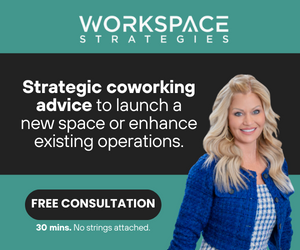- 2.7% of the US workforce quit in April 2021, according to the US Bureau of Labor.
- Research has found that the Great Resignation is not an industry issue, but a fundamental workplace problem that is finally coming to head.
- This guide by Jon Muller will break down what the Great Resignation is and what HR managers can do to reverse the tide.
This article was written by Jon Muller and was originally published on Work Design Magazine.
According to the US Bureau of Labor, 2.7% of the US workforce quit in April 2021, the highest ever recorded. The months following are similarly bleak. Called the Great Resignation, this guide will break down just what it is, and what HR managers can do to reverse the tide.
What is the Great Resignation?
First coined in 2019, the term Great Resignation refers to a voluntary mass exodus of employees from their jobs. 2021 has borne witness to the largest employee turnover rate in the US since 2000, triggered by the pandemic undoubtedly, but sustained by many other factors described below.
What Does the Data Say?
- A survey from Microsoft found that 41% of the global workforce is considering leaving their current employer within the next 12 months, with 46% percent planning to make a major pivot or career transition.
- According to LinkedIn data, 42% of employed job seekers were more upbeat about their prospects of advancing to the next level in their field, compared to only 33% a couple of months before that.
- Zeno Group found that 48% of satisfied employees are open to new opportunities, with 27% of employed workers already actively looking for new opportunities.
Why Does This Matter?
The impact of the Great Resignation is being felt across all industries. Sure, certain professions in the retail and service sectors are more heavily affected, but as data from a Gallup poll shows, employees in every field are quitting en masse. The research concludes that the Great Resignation is not an industry issue, but a fundamental workplace problem that is finally coming to head.
Why Is Talent Loss on the Rise?
COVID-19 has upended everyones’ lives, and in the process, triggered a reevaluation of people’s priorities, and how their work should fit in their new paradigm.
At a time when organizations are having a hard time finding skilled talent, retaining talent is more important than ever. Understanding why employees are choosing to leave can help HR executives develop better strategies and benefits packages to retain top performers and attract potential hires.
Let’s look at some of the key reasons why employees are leaving their companies.
Employee Burnout
Many workers are choosing to leave their jobs simply because, well, they are downright burnt out.
Since the COVID-19 pandemic, companies have had to take drastic measures to cut costs, including laying off a sizable percentage of their workforce. This meant that those who were lucky enough to keep their jobs had to take on added responsibilities to fill in the shoes of those who were laid off.
Fast forward many months, and the amount of workload that many employees find themselves taking on has become too much.
A report from Glint tracked various risk factors that could lead to burnout across a large group of workers for over 3 years, such as stress levels, workload, and anxiety. The result? The risk of employee burnout has spiked, reaching an all time high earlier this year.
45% of remote workers say they now work more hours regularly compared to before the pandemic, while 48% report increased pressure to be online all the time according to recent statistics. These are just some of the disturbing data points that paint a picture of overworked, burned out workers ready for a change.
Higher Pay Elsewhere
Among the many things that COVID-19 disrupted was financial stability. Many dual income households suddenly became single income, while other people had their hours drastically cut. To make up for lost income, employees are now highly motivated to find opportunities that offer higher pay.
According to the 2021 Job Retention Report, better job opportunities and growth was cited as the number one reason for employees wanting to leave their current job, followed by “health and family” and “work life balance”.
Data from the Federal Reserve Bank of Atlanta found that employees who switched jobs got a roughly 30% bigger annual pay boost vs those who stayed in their existing roles.
Greater Remote Work Flexibility
The great remote working experiment, spawned by the pandemic, has fundamentally altered the way employees perceive work. People are no longer content with their work being a place to earn a living. Other factors such as commute time, work life balance, and remote work flexibility now all weigh heavily with employees.
Manpower Group found that industries that are unable to offer work site flexibility are the ones that will struggle the most with talent shortages. In a large survey involving 2,000 professionals, Prudential found that over two thirds of American workers now prefer a hybrid work model that gives them greater autonomy where to work.
Some companies are already responding to the increased demand for flexibility. According to Manpower Group, 36% of employers said they plan to incorporate flexible start and finish times, and 31% plan on offering a mix of remote working and workplace-based working.
Turning a Corner on The Great Resignation
At the heart of any successful strategy for combating voluntary turnover involves truly understanding the mindset of the post-COVID-19 employee. The old paradigm of what motivates employees is now largely outdated as the pandemic has jolted people’s consciousness to put a lot more emphasis on safety, location flexibility and work-life balance.
It’s all about Prioritizing the Employee Experience
For any HR department, the focus moving forward should be to prioritize the employee experience.
The employee experience encompasses everything from where and how an employee works to how they feel when they go into work.
Organizations need to listen to employees and offer benefits that cater to their specific needs, instead of guessing. For example, working parents may want a benefits package that includes parental leave, childcare options, and more paid-time off. However, a young, single employee has no need for childcare and parental leave and may instead prefer learning opportunities and access to wellbeing programs.
According to employee experience (EX) expert Shane Green, HR should focus on the three “M”s:
- Moments: Map out the key moments of employees that occur daily, weekly, monthly, or even yearly. Identify the key moments and enhance those experiences.
- Mechanisms: Add an “emotional lift” to dull but essential mechanisms within the company to make them more meaningful to the employee. Examples of such mechanisms according to Shane include the interview process, department onboarding, the discipline process, and recognition.
- Managers: Train managers and leaders to be emotional and inspiring at the right time to elevate every moment and mechanism experienced by employees.
Deliver a great employee experience, and you’ve won over the employee.
Closing Thoughts
The Great Resignation may be here, but its damage can be limited. The key takeaway here is that employers need to truly understand what drives and motivates employees, and provide benefits packages that will add value to their lives. Initiatives that prioritize employee wellbeing, work-life balance, competitive compensation packages, and embedded flexibility are all on the winning side of the war for talent.

 Dr. Gleb Tsipursky – The Office Whisperer
Dr. Gleb Tsipursky – The Office Whisperer Cat Johnson – Coworking Marketing Maven
Cat Johnson – Coworking Marketing Maven Angela Howard – Culture Expert
Angela Howard – Culture Expert Drew Jones – Design & Innovation
Drew Jones – Design & Innovation Andrea Pirrotti-Dranchak – Competitive Advantage
Andrea Pirrotti-Dranchak – Competitive Advantage Jonathan Price – CRE & Flex Expert
Jonathan Price – CRE & Flex Expert Jeremy Fennema – Tech Innovation Alchemist
Jeremy Fennema – Tech Innovation Alchemist







